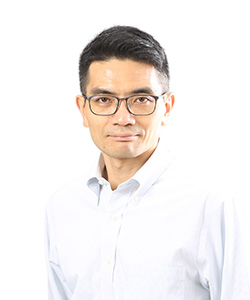Prof. Sing-Hang CHEUNG
Associate Professor

Office: 6.24
Phone: (852) 3917-4225
Email: singhang@hku.hk
Research Lab:
http://singlab.psy.hku.hk/
Google scholar profile:
http://goo.gl/Zfycp
HKU Researcher Page:
http://hub.hku.hk/rp/rp00590
EDUCATION
BA, PhD, University of Minnesota
RESEARCH INTERESTS
Visual neuroscience, visual impairments, cortical plasticity, visual crowding, reading, letter recognition
SELECTED PUBLICATIONS
Lau, J. S. F., & Cheung†, S.-H. (2012). Illusory contour formation survives crowding. Journal of Vision, 12(6):15, 1-12. doi: 10.1167/12.6.15.
Ho, C., & Cheung†, S.-H. (2011). Crowding by invisible flankers. PLoS ONE, 6(12): e28814.
doi: 10.1371/journal.pone.0028814.
Liu†, T., Cheung, S.-H., Schuchard, R. A., Glielmi, C. B., Hu, X., He, S., & Legge, G. E. (2010). Incomplete cortical reorganization in macular degeneration. Investigative Ophthalmology & Visual Science, 51(12), 6826-6834. doi: 10.1167/iovs.09-4926.
Yu, D., Cheung, S.-H., Legge†, G. E., & Chung, S. T. L. (2010).Reading speed in the peripheral visual field of older adults: does it benefit from perceptual learning? Vision Research, 50(9), 860-869.
doi: 10.1016/j.visres.2010.02.006.
Cheung†, S.-H., Fang†, F., Legge, G. E., & He, S. (2009). Retinotopically specific reorganization of visual cortex for tactile and visual information processing in an adult with impaired vision. Current Biology, 19(7), 596-601. doi: 10.1016/j.cub.2009.02.063.
Cheung†, S.-H., Kallie, C. S., Legge, G. E., & Cheong, A. M. Y. (2008). Nonlinear mixed-effects modeling of MNREAD data. Investigative Ophthalmology & Visual Science, 51(12), 6826-6834. doi: 10.1167/iovs.
07-0555.
Legge†, G. E., Cheung, S.-H., Yu, D., Chung, S. T. L., Lee, H.-W., & Owens, D. P. (2007). The case for the visual span as a sensory bottleneck in reading. Journal of Vision, 7(2):9, 1-15. doi: 10.1167/7.2.9.
Cheung†, S.-H., & Legge, G. E. (2005). Functional and cortical adaptations to central vision loss. Visual Neuroscience, 22(2), 187-201.
doi: 10.1017/S0952523805222071.
† = corresponding author
RESEARCH LABORATORY
Visual Psychophysics and Neuroimaging Laboratory
We are interested in the process of interpreting, analyzing and representing visual information in the brain. Research topics include visual impairment, visual crowding, reading, organization of the visual cortex and cortical plasticity. Our research involves different methodologies: psychophysics, functional magnetic resonance imaging (fMRI) and diffusion tensor imaging (DTI).
RESEARCH INTERNSHIP OPPORTUNITIES
Project Title: Visual crowding and consciousness Our ability to perceive off-gaze objects is greatly affected by the presence of distractors due to visual crowding. Counterintuitively, despite the worse perceptual performance, our previous research has shown that observers can become over-confident about their perceptual performance under crowding. Here we want to study the effects of crowding on perceptual confidence and consciousness.
Project Title: Visual working memory capacity under crowding Crowding has been reported to change the appearance of the crowded target. Does crowding change the perceived visual complexity of the target? Complexity of items in visual display is known to influence the number of items can be processed simultaneously in visual working memory. Here we want to study the effects of crowding on visual working memory capacity.
Project Title: Cognitive biases in depression and anxiety Depression and anxiety have been shown to be associated with biases in cognitive processes. Here we want to study such association.
Intern Selection (for all projects):
Strong work ethics
High motivation for research
Academic excellence
Good language skills
